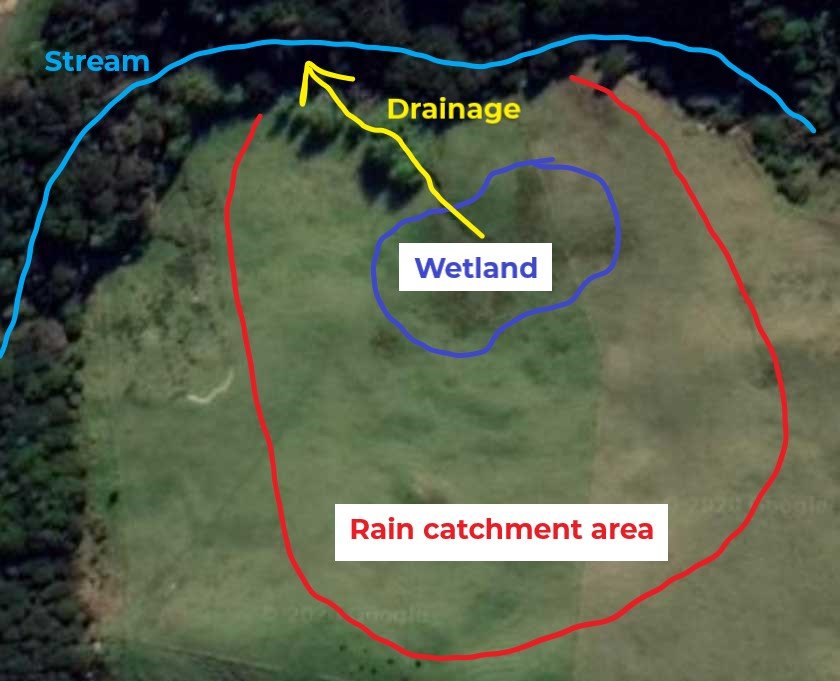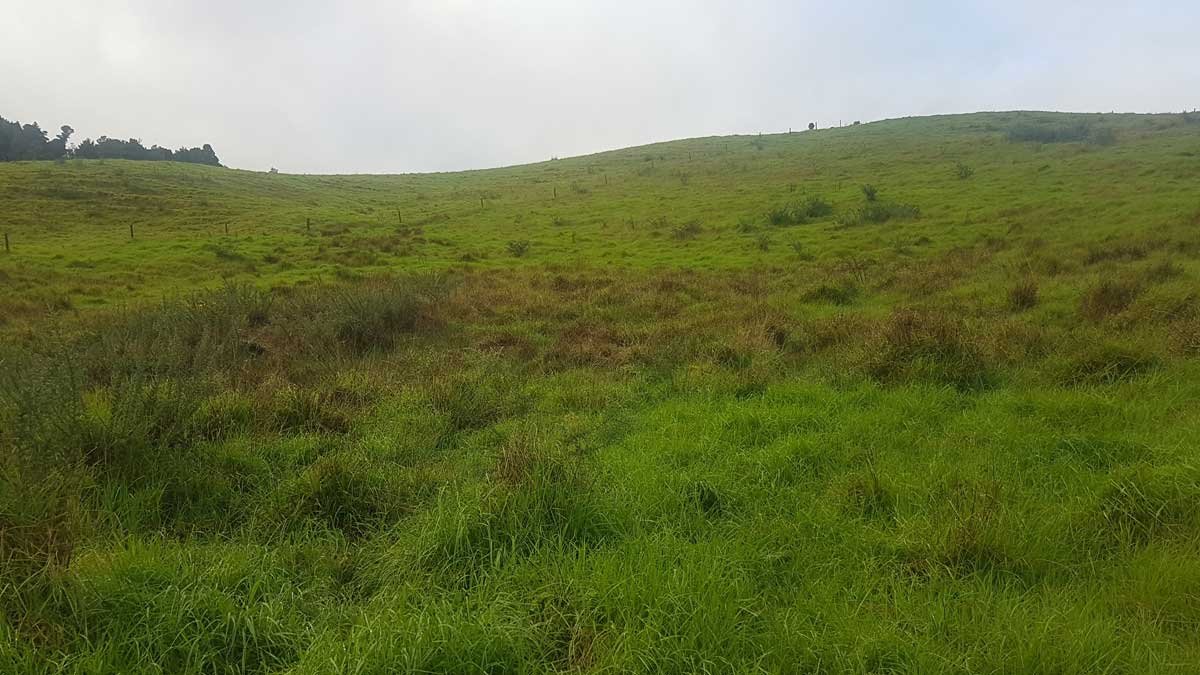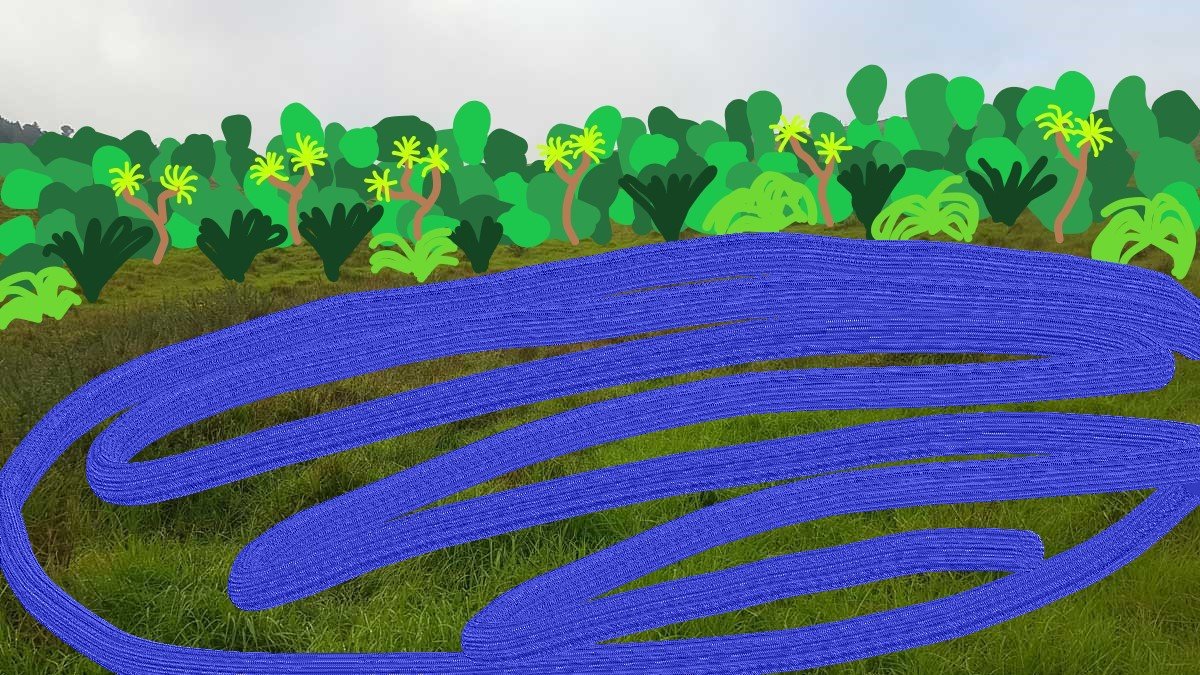Last week we got 100mm of rain in 24 hours. That’s 10% of all the rain we’ve had since we’ve been here. It follows a summer of drought and water restrictions. It was utterly delightful.
But when I went walking on the paddocks the next day, what I saw made me really sad.
The water running off our property is pretty clear. That’s a good thing. It indicates we’re not losing much soil to erosion, and therefore we’re not adding silt to the rivers and harbour we connect to.
But the water is running off. It enters an area that should be a wetland, and exits very quickly through a drainage ditch created by some farmer in the past. It’s a very clever system, and it makes me really mad. Because it should be a wetland, but how can it be a wetland if all the water drains away?
A wetland is otherwise known as a ‘swamp’. It’s an insanely important ecosystem type that New Zealand has systematically wiped out over the last 150 years. Only 10% of our national wetlands remain. In Northland, where I live, it’s 5%.
While some people see a swamp, I see an incredibly sophisticated water purification system that can improve our resilience against drought and flood. To finally receive 100mm of rain, only to have most of it drain straight off again is – frankly – infuriating.
I did some rough figures using Google Maps and an online calculator. Roughly 1.7 million litres of water fell on the area that feeds the drain during our 100mm downpour. Hopefully some managed to soak into the soil, but with gravity at work, and only pasture to slow it down, it’s likely a lot of it left pretty quickly.

That water should be collecting in a wetland, creating a habitat for native wildlife, rather than contributing to the flooding downstream. I don’t know how much you know about Kaeo. If you know anything, it might be that it’s prone to flooding. There’s a webcam dedicated to watching the river.
Our property contributes to that problem. You see, we live in the hills above Kaeo. When we get a big rain, all the water that hits our property travels down a network of drains, and out into one of three waterways at our borders. It’s a really effective system.
The problem with it is that water all flows into the Kaeo River, down into Kaeo, and out into the Whangaroa Harbour. When you multiply this effect by all the farms in the area, then add climate change – the result isn’t a great outlook for the people of Kaeo. It’s also not great for us because… I kinda want that water.
So what if, instead of letting the water run out like that, we disabled the drainage? There would still need to be a run-off point, but if we let it fill up, an area around the size of a rugby field would become a wetland again.
And if we took the land around it and planted the slopes that feed into the wetland with pioneer natives like mānuka, kānuka, tī kouka (cabbage tree), and harakeke (flax)? Well, it’s likely that the birdlife that already exists around here will move in and add more seeds for more trees and eventually, the forest would exist here again.

Wetland as it is today

And as it might be one day
And if you changed the balance this way – to allow thousands of trees to drink the water before it gets to the wetland, and to allow the wetland to actually hold water before releasing it more slowly into the catchment – what would that mean for Kaeo?
On a scale of just one wetland in one part of the catchment… maybe not a lot. But it will slow some of the water from rushing down at the same time as everyone else. Kaeo has always flooded and will still flood. But maybe a little less.
So after watching the precious rain run straight off our property, I did the thing my Dad told me to do months ago and got in touch with Fish and Game, who offer services to help landowners restore wetlands. Their Northern Field Officer is coming over next week to scope it out, and help us figure out the next steps.
I’m also in touch with the Regional Council about what kind of consents I need to block the ditch. It’s a little frustrating that our farmer of the past probably just dug the thing without asking, and we may need to jump through hoops to repair the damage. But I want to do right by the environment, so we will jump all the hoops.
One of the next steps is to contact local Iwi and invite them to participate. Maybe they won’t want to, but I think it’s my responsibility to offer them the chance.
We’re still in the planning stage, so no costs or final plans have been set. Labour’s budget this year included a decent sum for wetland restoration, so I’ll be trying to tap into that because a restoration of this size is not cheap! On a national scale, it’s pretty small. But for us, it’s about a quarter of our total grazing area. It will need fencing, weed eradication, more intensive pest control, and some earthworks before we’re even ready to plant our first tree.
And then yesterday, I got an email from the Wetlands Trust looking for restoration projects ready for that funding! We’re not quite at ‘ready’ stage, but it’s definitely giving me a kick up the bum.
If you want to stay up-to-date about our wetland restoration project, you can join the mailing list below for weekly emails on the happenings on our block. There may be calls for planting days and fundraising in the future, but for today, I’m still imagining what will be.



Hi Kat! Really interesting to read about, look forward to hearing more about how the wetland comes along!